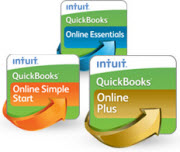
You also can "roll over" unspent funds into the next period if you didn't spend all that was budgeted. You can decide whether you want Mint to track how you're meeting budget goals monthly, every few months, or once a year. A Quicken-like planning tool lets you create budgets for unlimited expense categories.This one improvement makes Mint much more appealing for those of us who don't conduct all our finances with credit and debit cards. Mint had matched up the check numbers and moved them from pending to completed transactions. The next day, a couple of the checks I'd input into Mint had cleared. I quickly called the recipient and asked her to hold off cashing it 'til after pay day.

I input all my yet-to-clear checks recently, and the tool worked well-so well that it immediately warned me that a large check I'd written might trigger an overdraft. On the Transactions page, you click "Add a Transaction," and a drop-down box lets you identify the type of transaction-cash, check, or pending-as well as the account you used, and to click any personalized tags you may have created (mine are "vacation," "reimbursable," and "tax-related"). Now, it's finally possible to add checks and other yet-to-clear transactions and really see your cash position. Well, Mint finally incorporated that Quicken feature, and the results are quite good. For anyone who wants to prevent a bounced check, this feature is a must. But, as noted in a Consumer Reports Money Adviser report on online budgeting tools, it lacked an important feature present in Quicken tools: the ability to account for yet-to-clear transactions. Mint was sexier than Quicken Online-and far less clunky than the original Quicken software.

When Intuit last year announced its acquisition of, the popular online money-management and budgeting tool, I opined here that Mint could benefit from adopting some features from Intuit's Quicken Online.


 0 kommentar(er)
0 kommentar(er)
